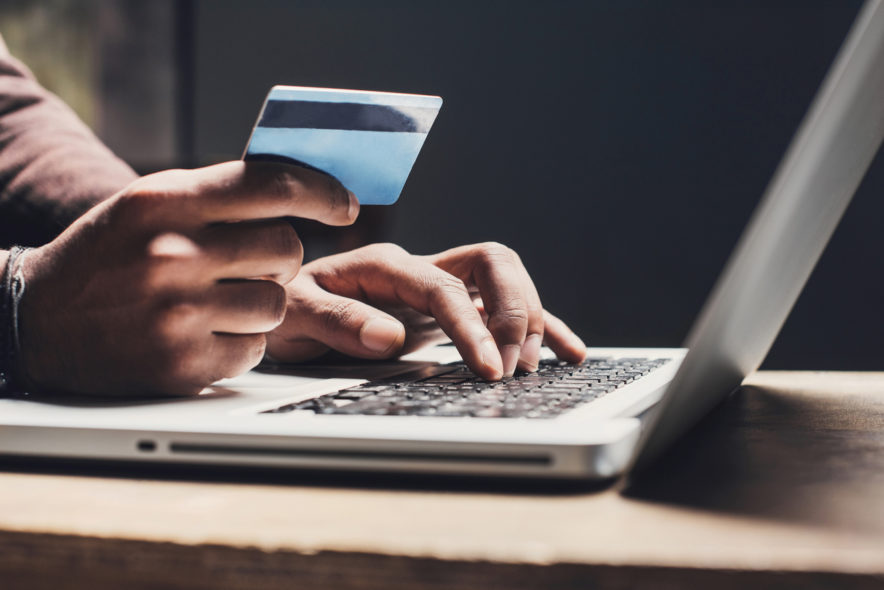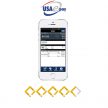
Online Payment Security: How to Ensure Safe Transactions
Online credit card transactions are convenient, but they can still be just as risky as offline transactions. Sensitive customer information is flowing through multiple systems during a transaction which could be intercepted if they are not up to date with PCI standards.
These computers may not be sufficiently secure and could expose sensitive customer information to the Internet. Furthermore, if malicious parties like hackers manage to take hold of this data, they could use it for crimes such as fraud.
As the merchant, it’s your responsibility to ensure that your customer’s data is safe during and after a transaction. So let’s review the ways that you can improve your company’s online payment security measures.
How to Secure Your Business’s Online Transactions
1. Be PCI-compliant
If you want to accept credit card transactions, one of the first things to prioritize is your compliance with PCI Security Standards Council standards. This global organization is responsible for setting the rules and regulations that help companies protect consumer cardholder data.
Failure to comply with these standards can get you sued by credit card networks and customers—especially if a breach occurs.
Here’s a checklist of general requirements for making your business PCI-compliant. The standards vary depending on how many card transactions you make each year. These are divided into four levels, with Level Four being the lowest (20,000 transactions annually) and Level One the highest (6 million transactions annually).
The standards are generally much stricter if your business does more transactions, as this means you’re also handling more sensitive customer information.
2. Data Encryption
Encryption is a security measure wherein the data sent to a system is encoded by a special algorithm. This makes the data accessible only to those with the decryption key, which is with the merchant.
To give you an example of how encryption works, let’s take the word “payment.” To make “payment” difficult to read, a program could replace the letters with random numbers, symbols, and other letters. It could now be something like “Sz1+kt5%H0&!”, which would be much more difficult to decipher for outsiders who don’t have the key.
3. Tokenization
Like encryption, tokenization replaces data with an algorithm-generated code, making them harder to breach. In tokenization, a program uses tokens, which are random sequences of characters, as substitutes for your system to use. This also makes it hard for hackers to figure out what they mean.
Meanwhile, the real data is stored in separate and secure cloud storage for you to access should you need it in the future.
4. Obtain SSL Certification
Businesses that sell on their website will need SSL or Secure Sockets Layer certification. SSL is a protocol that creates an encrypted link between the customer’s web browser and your web server. It keeps any data transmitted between them, such as credit card details, private.
If a website doesn’t have an SSL certificate, a hacker could just wait for a customer to input their credit card information and get it for themselves. SSL certificates are typically available at vendors or web-hosting providers, though payment processors can also provide SSLs.
5. Keep Operating Systems, Networks, and Software Updated
Hackers will always search for new ways to get into your business’s computer networks and get whatever data they can. You’ll want to make sure you always have the latest security updates installed on your operating systems and software. One hassle-free way to stay updated is to set your networks to automatically install updates.
Regularly updating helps patch up any previous vulnerabilities, keeping you one step ahead of threats such as new viruses and malware. There’s a good chance that the hacker hasn’t developed techniques to hack into more recent security features, which gives you more time until the next update.
6. Provide Secure Login
Securing the customer’s login process is a must, as hackers can easily infiltrate your network if they manage to get login details. An effective way to do this is through two-factor or two-step authentication. In this procedure, the customer has to provide more information besides their username and password.
For instance, once they input their name and password, your system can also send a code to their phone. The customer then has to type in the code they received on their mobile device before logging in to their account. Since a hacker likely doesn’t have access to the customer’s phone, they’ll get stuck on the first step.
Furthermore, the two-factor authentication will also alert the customer if there’s been a login attempt on another device or an unusual location. It gives them the chance to change their password to a more secure one.
7. Enable AVS
One handy online payment security method you can implement is the Address Verification System or AVS. This tool helps the payment processor determine whether the billing address inputted by a customer is the same one in the credit card network’s records. If the addresses match, the transaction gets approved.
Since it rejects incorrect billing addresses, the AVS can help prevent other people from using a cardholder’s credit card number for themselves.
8. Regular Security Assessment
While implementing all the measures above can significantly boost your system’s security, it’s still crucial to conduct assessments at least once a year. You can have an expert inspect your system much like a hacker would. This lets you spot flaws that could get exploited later on, such as a login process that isn’t fully secure, or a customer’s unencrypted data. You’ll be able to address these vulnerabilities before any cybercriminals discover them.
What Is an Identifier That an Online Transaction Is Safe?
Here are a few signs that help customers tell if a business has online payment security measures in place:
- The site’s URL starts with an “HTTPS” and your browser address bar has a locked padlock icon. These both mean that the site has a valid SSL certificate and will ensure that the transactions are fully encrypted.
- Trust seals are displayed on the website. Also known as trust badges, various companies grant these seals to help confirm your business’s credibility and show customers that they can safely transact with you. Some popular trust seals include Google, Visa, Mastercard, and PayPal.
- The business site provides a full privacy statement that discloses how the customer’s data will be protected. This helps consumers decide if they’re comfortable with the existing security measures before doing business with you.
Your Online Payment Security Is a Top Priority
Securing your business’s online transactions is key to building trust with customers and preventing major financial losses. Here at Preferred Payments, we’d like for your enterprise to be more successful.
This is why ECRYPT, our online payment processing platform, comes with a security engine to protect every card transaction and prevent identity theft and fraud. The program offers Level 1 PCI-compliant security measures, including tokenization and end-to-end encryption.
You can learn more about ECRYPT’s features here.
Ready to get started?
Get in touch or create an account





